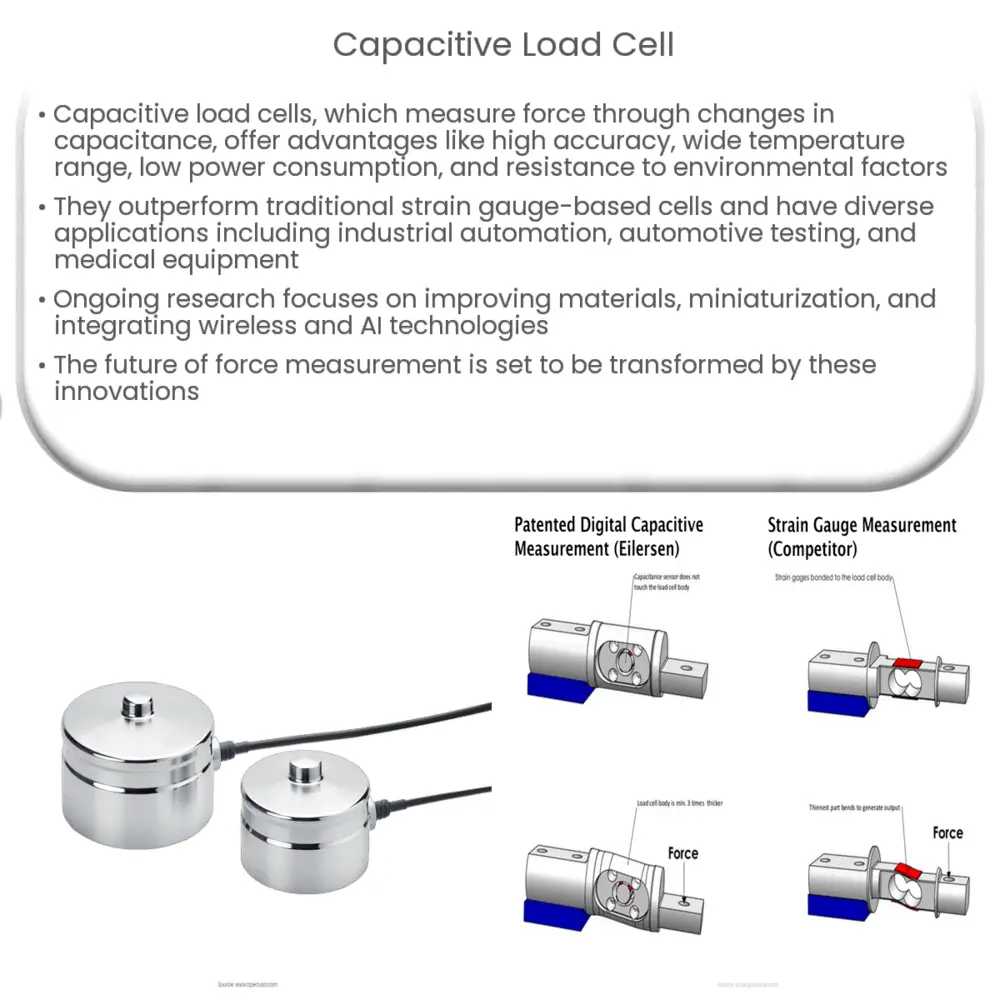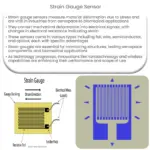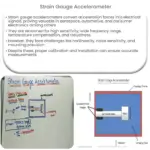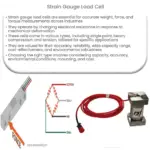Capacitive load cells provide highly accurate force measurements, minimal temperature sensitivity, and low power consumption for various applications.

Capacitive Load Cell: The Future of Force Measurement
Introduction
Capacitive load cells are revolutionizing the field of force measurement, offering numerous advantages over traditional strain gauge-based load cells. This article aims to provide a comprehensive understanding of capacitive load cells, their working principle, advantages, applications, and future prospects in the world of force measurement.
Working Principle of Capacitive Load Cells
Capacitive load cells utilize the principle of capacitance to measure force or weight. Capacitance refers to the ability of a system to store an electric charge, which is typically measured in Farads. A capacitive load cell consists of two parallel plates separated by an insulating material, known as the dielectric.
When a force is applied to the load cell, the distance between the parallel plates changes, resulting in a variation in capacitance. This change in capacitance is directly proportional to the applied force and can be measured using an electronic circuit. The capacitance value is then converted into an electrical signal, which can be further processed and displayed as the measured force or weight.
Advantages of Capacitive Load Cells
Capacitive load cells offer several benefits over their strain gauge counterparts, making them an attractive choice for many applications. Some of these advantages include:
- High accuracy: Capacitive load cells are known for their high accuracy and resolution, making them suitable for precise force measurement applications.
- Wide temperature range: Unlike strain gauge load cells, capacitive load cells exhibit minimal temperature sensitivity, allowing for accurate measurements across a broader range of temperatures.
- Low power consumption: Capacitive load cells require less power to operate, making them ideal for battery-powered or energy-efficient applications.
- Long lifespan: Due to the absence of mechanical parts, capacitive load cells experience less wear and tear, resulting in a longer lifespan and reduced maintenance costs.
- Resistance to environmental factors: Capacitive load cells are less susceptible to humidity, dust, and other environmental factors, ensuring consistent and reliable performance in challenging conditions.
Applications of Capacitive Load Cells
Capacitive load cells are versatile and can be used in a wide range of applications, such as:
- Industrial automation and process control systems
- Automotive testing and performance evaluation
- Medical devices and equipment
- Aerospace and defense applications
- Consumer electronics, such as smart scales and fitness equipment
Selection Criteria for Capacitive Load Cells
When selecting a capacitive load cell for a specific application, it is crucial to consider several factors, including:
- Capacity: The load cell’s capacity should match the maximum force or weight to be measured in the application.
- Accuracy: Choose a load cell with an accuracy level suitable for the application’s requirements. High-precision applications may require load cells with better accuracy and resolution.
- Temperature range: Ensure the load cell’s operating temperature range is compatible with the environment in which it will be used.
- Physical dimensions: Consider the space constraints of the application and select a load cell that fits within the available space.
- Environmental factors: For applications exposed to harsh environmental conditions, choose a load cell with suitable protection against dust, humidity, and other contaminants.
Integration and Calibration
Integrating a capacitive load cell into a system involves connecting it to the appropriate electronics for signal conditioning and processing. Signal conditioning circuits typically include amplification, filtering, and analog-to-digital conversion. Once the load cell is integrated, it is essential to calibrate it to ensure accurate and reliable measurements. Calibration involves applying known forces or weights to the load cell and adjusting the signal processing parameters to match the output with the applied force or weight.
Future Prospects
As capacitive load cells continue to gain popularity, ongoing research and development efforts are focused on enhancing their capabilities further. These advancements include:
- Improved materials: Researchers are exploring new dielectric materials that can increase the sensitivity and accuracy of capacitive load cells.
- Miniaturization: Efforts are being made to reduce the size of capacitive load cells without compromising their performance, making them suitable for a wider range of applications.
- Wireless technology: The integration of wireless communication technologies, such as Bluetooth and Wi-Fi, can enable more flexible and convenient deployment of capacitive load cells in various applications.
- Artificial intelligence and machine learning: The incorporation of AI and machine learning algorithms can improve the signal processing capabilities of capacitive load cells, leading to more accurate and reliable measurements.
Conclusion
Capacitive load cells offer numerous advantages over traditional strain gauge-based load cells, making them an attractive choice for a wide range of applications. With ongoing advancements in materials, miniaturization, and integration with wireless and AI technologies, capacitive load cells are poised to revolutionize the field of force measurement in the coming years.




